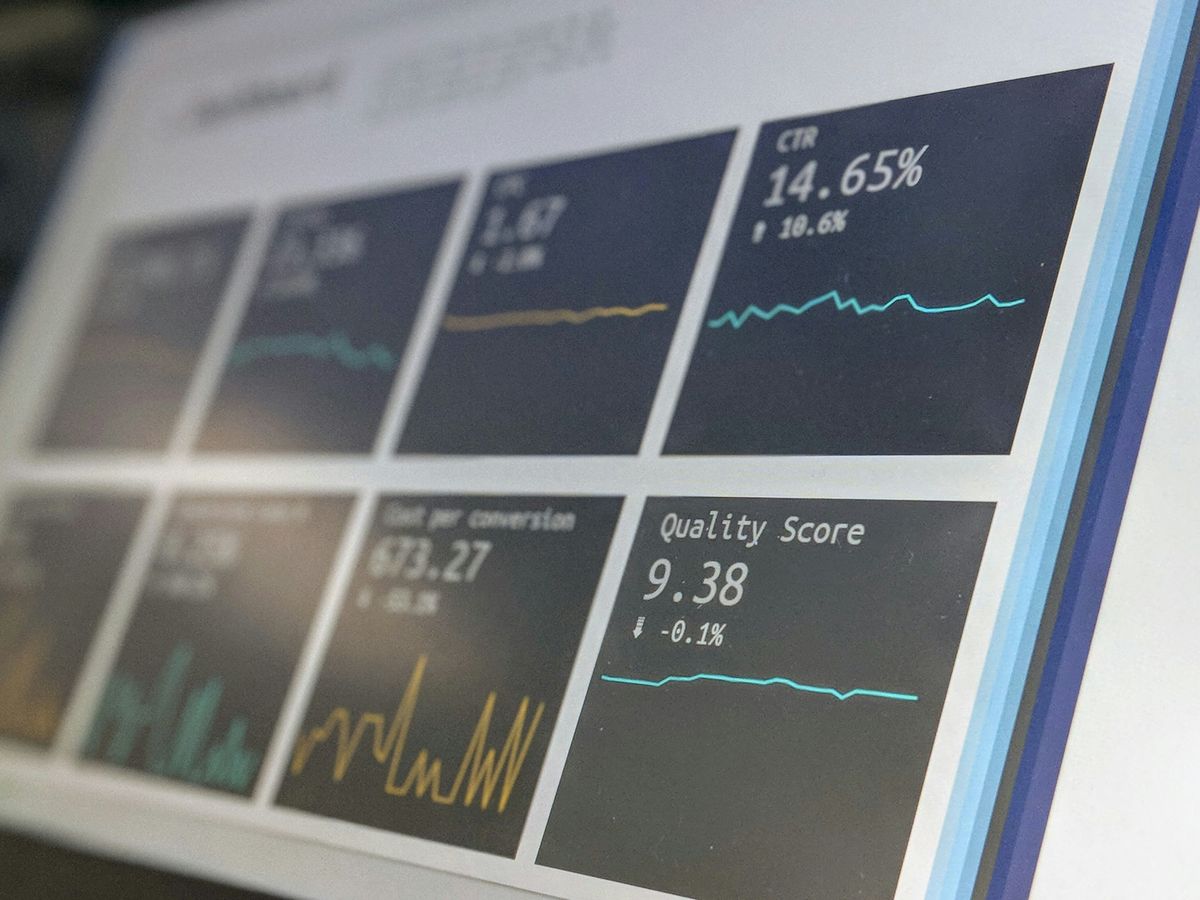Understanding SEO is essential for anyone wanting to improve their website’s visibility on search engines. This article aims to break down the fundamental principles of SEO into easy-to-understand concepts for beginners. By grasping these basics, you can start applying effective strategies to enhance your online presence and drive more traffic to your site.
Key Takeaways
- SEO helps your website show up on search engines like Google.
- Using the right keywords is key, but quality content matters more.
- Make sure your website is easy to navigate for both users and search engines.
- Building links from other sites can boost your site’s authority.
- Regularly check your site’s performance to see what’s working and what needs improvement.
Understanding the Basics of SEO

What is SEO?
SEO stands for Search Engine Optimization. It’s the process of improving your website so that it ranks higher in search engine results. When your site ranks higher, more people can find it. This means more visitors, which can lead to more customers.
Importance of SEO for Businesses
For any business, being visible online is crucial. Here are a few reasons why SEO matters:
- Increased Visibility: The higher you rank, the more people see your site.
- Credibility: Users trust search engines, so a high ranking can boost your credibility.
- Cost-Effective: Unlike paid ads, organic traffic from SEO is free.
How Search Engines Work
Search engines like Google use complex algorithms to decide which sites to show for a search. Here’s a simple breakdown of how it works:
- Crawling: Search engines send out bots to discover new content.
- Indexing: They store this content in a massive database.
- Ranking: When someone searches, the engine looks through its index and ranks the results based on relevance.
Understanding these basics is essential for anyone looking to improve their online presence. SEO is not just about using the right keywords; it’s about creating a user-friendly experience that keeps visitors coming back.
In summary, mastering the fundamentals of SEO can help you make your website more effective and reach a larger audience. Remember, the right strategies can make a big difference!
Conducting Effective Keyword Research
Identifying Relevant Keywords
When I start my keyword research, I focus on finding the right words that people use to search for what I offer. This is crucial for attracting the right audience. I brainstorm a list of seed keywords that relate to my business. For example, if I run a bakery, I might think of terms like “fresh bread” or “birthday cakes.”
Using Keyword Research Tools
Next, I use various tools to expand my list. Here are some tools I find helpful:
- Google Keyword Planner
- SEMrush
- Ahrefs
- Moz Keyword Explorer
- Ubersuggest
These tools help me see how many people search for these keywords and how tough the competition is.
Analyzing Keyword Competition
After gathering my keywords, I check how my competitors are doing. I look for keywords they rank for but I don’t. This helps me find gaps in my strategy. For instance, if my competitor is ranking for “gluten-free cakes” and I’m not, that’s a chance for me to attract more visitors.
Finding the right keywords can lead to big returns from small advertising budgets. It’s all about being smart with your choices!
On-Page SEO Techniques


Optimizing Title Tags and Meta Descriptions
When I create a webpage, I always start with the title tag and meta description. These are the first things people see in search results. A good title tag should be clear and include relevant keywords. The meta description should summarize the page and encourage clicks. Here’s a quick checklist:
- Keep the title under 60 characters.
- Make the meta description around 150-160 characters.
- Include your main keyword in both.
Using Header Tags Effectively
Header tags help organize my content. I use them to break up sections and make it easier for readers to find what they need. Here’s how I do it:
- Use H1 for the main title (only one per page).
- Use H2 for main sections.
- Use H3 for subsections.
This structure not only helps readers but also helps search engines understand my content better.
Creating High-Quality Content
Creating content that is valuable is key. I focus on writing clear, engaging, and informative articles. Here are some tips:
- Write for your audience, not just for search engines.
- Use simple language and short sentences.
- Include images or videos to make the content more engaging.
High-quality content is essential for good SEO. It keeps visitors on my page longer and encourages them to share it.
In summary, mastering these on-page SEO techniques can significantly improve my website’s visibility. By focusing on title tags, header tags, and high-quality content, I can create a better experience for my visitors and improve my search rankings. Remember, 13 essential on-page SEO factors you need to know can make a big difference!
Technical SEO Essentials
Improving Site Crawlability
To make sure search engines can easily find and understand my website, I focus on improving its crawlability. This means I want search engines to navigate my site without any issues. Here are some steps I take:
- Create a clear site structure: I organize my pages logically, making it easy for crawlers to find everything.
- Use a sitemap: This is like a map for search engines, showing them all the important pages on my site.
- Fix broken links: I regularly check for and fix any broken links, as they can confuse crawlers.
Optimizing Site Speed
Fast-loading websites are crucial for keeping visitors engaged. If my site takes too long to load, users might leave before it even appears. Here are some tips I use to speed things up:
- Optimize images: I make sure my images are not too large, which can slow down loading times.
- Enable caching: This helps store some data so that returning visitors can load my site faster.
- Minimize redirects: Too many redirects can slow down my site, so I keep them to a minimum.
Implementing Schema Markup
Schema markup is a special code I add to my website to help search engines understand my content better. This can lead to better visibility in search results. Here’s why I think it’s important:
- It can enhance my search listings with rich snippets, making them more attractive to users.
- It helps search engines understand the context of my content, which can improve rankings.
- It can lead to higher click-through rates, as users are more likely to click on well-structured listings.
By focusing on these technical aspects, I can ensure that my website is not only user-friendly but also optimized for search engines. This balance is key to achieving better visibility online.
In summary, technical SEO is about making my website work better for both users and search engines. By improving crawlability, optimizing speed, and using schema markup, I can enhance my site’s performance and visibility.
Building Quality Backlinks
Understanding Backlinks
Backlinks are links from other websites that point to your site. They are important because they help improve your website’s authority and search engine rankings. Good backlinks come from reputable sites that are relevant to your content. They not only boost your SEO but also drive traffic to your site.
Strategies for Earning Backlinks
Here are some effective strategies to earn quality backlinks:
- Create Valuable Content: Develop high-quality, informative content that naturally attracts links. This could be guides, research papers, or unique resources.
- Outreach and Relationship Building: Connect with relevant websites and influencers. Offer guest posts or collaborate on content to build relationships.
- Broken Link Building: Find broken links on authoritative sites. Notify the site owner and suggest your content as a replacement.
- Guest Blogging: Write guest posts for reputable blogs in your niche. Include a link back to your site in the author bio.
- Participate in Industry Directories: Submit your site to trusted industry directories that offer backlink opportunities.
Avoiding Toxic Backlinks
Not all backlinks are good. Links from low-quality or spammy sites can harm your rankings. It’s crucial to focus on quality over quantity. Avoid black hat tactics like buying links, as they can lead to penalties from search engines.
Backlinks are essential for a successful SEO strategy. They enhance your website’s authority and improve your search engine rankings.
Conclusion
Building quality backlinks takes time and effort, but it’s worth it. By focusing on creating valuable content and building relationships, you can earn backlinks that will help your site grow. Remember, the more quality backlinks you have, the better your site will perform in search results.
Monitoring and Analyzing SEO Performance


Using Analytics Tools
To really understand how well my SEO efforts are working, I rely on analytics tools. These tools help me track important metrics like organic traffic, search engine rankings, and conversion rates. By keeping an eye on these numbers, I can see what’s working and what needs improvement. Here are some key metrics I focus on:
- Organic Traffic: This shows how many visitors come from search engines.
- Search Engine Rankings: This tells me where my site appears in search results for specific keywords.
- Conversion Rates: This measures how many visitors take action, like signing up or making a purchase.
Tracking Keyword Rankings
I also pay close attention to my keyword rankings. This helps me understand how well my chosen keywords are performing. I often use tools like Google Search Console to monitor these rankings. Here’s how I do it:
- Set Up Google Search Console: This tool provides valuable insights into my website’s performance.
- Check Keyword Performance: I look at which keywords are driving traffic and which ones need more work.
- Adjust My Strategy: Based on the data, I can tweak my content or focus on different keywords.
Adjusting Strategies Based on Data
Finally, I make sure to adjust my SEO strategies based on the data I gather. This is crucial for ongoing improvement. Here’s what I typically do:
- Review Analytics Regularly: I check my analytics at least once a month to stay updated.
- Identify Trends: I look for patterns in the data that can inform my next steps.
- Test New Approaches: If something isn’t working, I’m not afraid to try new tactics.
Monitoring my SEO performance is like keeping a pulse on my website. It helps me identify strengths and weaknesses, ultimately enhancing user experience and engagement.
By focusing on these areas, I can ensure that my SEO efforts are effective and aligned with my business goals. Remember, effective analysis is crucial for optimizing web presence and measuring ROI!
Enhancing User Experience for SEO


Improving Site Navigation
When I think about user experience, the first thing that comes to mind is navigation. A well-organized website helps visitors find what they need quickly. Here are some tips to improve navigation:
- Use clear labels for menu items.
- Keep the structure simple and logical.
- Include a search bar for easy access to content.
A smooth navigation experience keeps users engaged and encourages them to explore more pages.
Ensuring Mobile-Friendliness
With so many people using their phones to browse the web, having a mobile-friendly site is crucial. I always make sure my website is responsive, meaning it adjusts to different screen sizes. This way, users can easily read and interact with my content without zooming in or scrolling sideways.
Reducing Bounce Rate
A high bounce rate can hurt my SEO. To keep users on my site longer, I focus on:
- Fast page load times.
- Engaging and relevant content.
- Clear calls to action that guide users to the next steps.
Improving user experience is not just about aesthetics; it’s about making sure visitors find what they need and enjoy their time on my site.
By enhancing user experience, I not only keep my visitors happy but also improve my site’s SEO performance. When users enjoy their visit, they are more likely to return and recommend my site to others. This is why I prioritize user experience in my SEO strategy.
Frequently Asked Questions
What is SEO and why is it important?
SEO stands for Search Engine Optimization. It helps websites show up in search results, making it easier for people to find them. This is important for businesses because more visibility can lead to more customers.
How do search engines work?
Search engines like Google use special programs called crawlers to explore the internet. They look at websites and collect information to show the best results when someone searches for something.
What are keywords and why do they matter?
Keywords are words or phrases that people type into search engines. They are important because using the right keywords can help your website appear in search results.
What is on-page SEO?
On-page SEO refers to the techniques used directly on your website to improve its ranking. This includes things like optimizing titles, using headings, and creating quality content.
What are backlinks and why are they essential?
Backlinks are links from other websites to yours. They are important because they show search engines that your site is trustworthy and can help improve your ranking.
How can I track my SEO performance?
You can use tools like Google Analytics to monitor your website’s traffic and see how well your SEO strategies are working. This helps you make improvements based on data.




